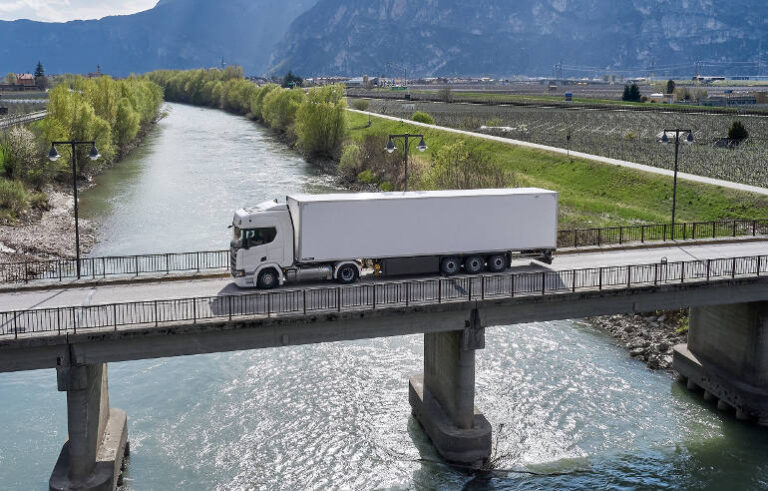Scania continues to expand and improve its biogas offering for heavy trucks by introducing two new gas engines. This goes hand-in-hand with the major gas initiative from Scania earlier this year, when several new gas tank solutions were presented. The new 13-litre engines offer 420 and 460 hp and between them cover the majority of the European truck market’s high power demand, including long- distance trucks. At the IAA fair, Scania is also displaying its industry-leading new Super-based powertrain with trucks on show both indoors and outdoors.
The interest for locally produced biomethane for trucks is rapidly increasing, stimulated by the ambition to decarbonise road transports and abandon fossil gas. Biomethane has the ability to reduce CO2 by up to 90% from a well-to-wheel perspective. The combination of powerful engines and tank solutions that provide longer ranges than ever before (in both CBG and LBG tanks) give all kinds of hauliers the opportunity to choose biomethane-based truck solutions.
“Tractor-and-trailer combinations for long haul applications with train weights of 40 tonnes can now expect ranges of up to 1400 km with liquefied biomethane in their tanks,” says Stefan Dorski, Senior Vice President and Head of Scania Trucks.
“Since the networks of available filling stations are also expanding rapidly, trucks with gas engines have become a really strong alternative for customers who want to phase out the use of fossil fuels and reduce their CO2 footprint.”
Gas engine-powered trucks are an important cornerstone of Scania’s adherence to its stated Science-Based Targets, the company’s commitment to reduce the CO2 emissions from the use of its products by 20% overall until 2025, with 2015 as the baseline. According to Scania, electrification and reduced consumption from combustion engines will not be enough to reach the company’s own targets and the targets stipulated by the Paris Agreement; all available means must be used.
The new engines are based on the renowned 13-litre gas engine that Scania has offered for several years. By increasing their engine power levels and preparing them for future legal demands, Scania is demonstrating its intention to gain an even bigger market share in the gas truck business, with sustainability in focus:
“We see quite a potential in biomethane from a commercial perspective,” says Dorski. “With the kind of flexibility, total operating economy and range we now can offer, I am convinced that customers will recognise what a great solution this is. Also, markets where gas used to be a marginal factor are now realising how much more attractive this fuel has become in the past few years. Operating gas engine trucks is simple compared to other alternatives and does not mean that you have to give up anything in driveability, flexibility or driver comfort.”
True to Scania’s gas heritage, the new gas engines work with complete combustion of both the fuel and the oxygen, without any need for diesel or AdBlue. The power stroke is initiated by spark plugs, as is the case with petrol engines. The pre-mixing of the gas fuel takes place in the intake manifold on the way into the cylinders.
An important goal for Scania’s engineers was to ensure the best possible driveability, with Scania’s Super diesel engines as the benchmark for performance and characteristics. In a direct comparison with a diesel engine of the same power level, the most noticeable difference for a layman would probably be that the gas engine runs quieter.
The new 13-litre gas engines are paired with Scania’s latest Opticruise gearboxes (G25), Scania’s automated gear-changing system. This means that the driver gets smooth, first- class gear changing and drive comfort, with fast, uninterrupted gear selections. The maximum torque from the new gas engines (see chart below) is very close to what their diesel siblings offer, and just like them the gas engines will offer substantial fuel-saving capabilities. Orders for the new gas engines can be placed from Q3 2023.
Scania Super – industry-leading performance confirmed
In November last year Scania introduced a range of ground-breaking 13-litre engines with capacity for biofuels and regular diesel fuel. Scania claimed fuel savings of 8 percent for long-haul customers from the new powertrain with new engines, gearboxes and rear axles, figures that since then have been confirmed in several press tests made by independent journalists in Europe.
The new engine platform offers its superior performance mainly due to dual overhead cams and Scania Twin SCR, a system for twin injection of AdBlue that helps increase the efficiency of the aftertreatment system.
The new engines have an optional Compression Release Brake for improved engine- braking performance and are supported by smart services such as flexible maintenance intervals based on the actual operation and Scania ProCare with preventive renewals of critical components.
Scania’s latest engine range is a completely new platform, which Scania R&D has developed from the ground up. The new powertrain represents an investment of more than two billion euros in total.
The new range means that Scania’s combustion engine customers will get fuel efficiency, biofuel capability, total operating economy figures and reduced CO2 emissions at a completely new level. The new engines are fit for many applications and offer vital contributions to reducing carbon footprint.






